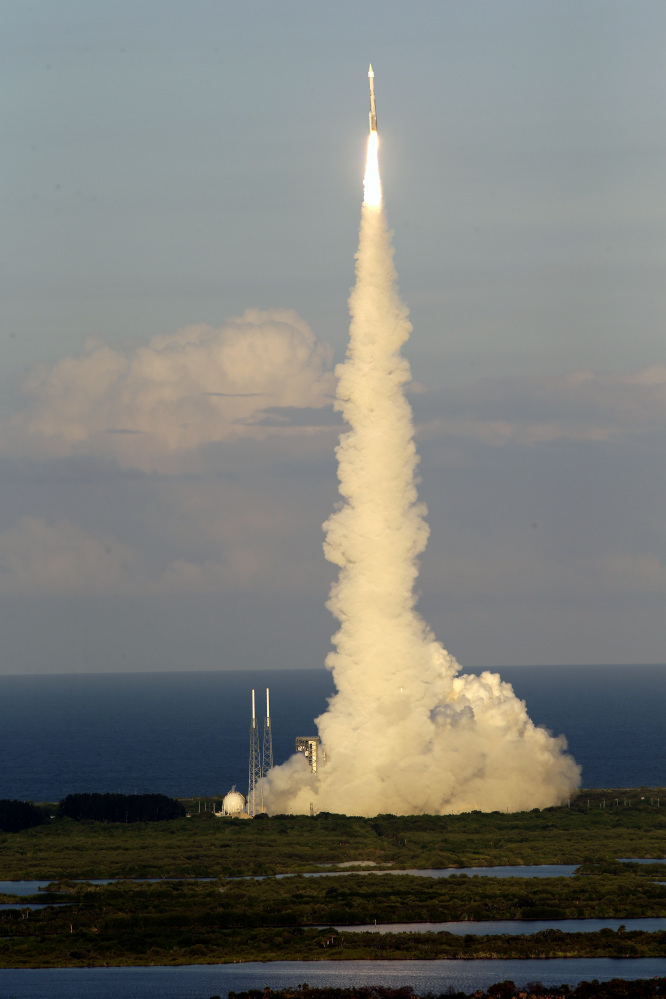CAPE CANAVERAL, Fla. — The first NASA explorer of its kind took off on a seven-year quest Thursday, chasing after a big, black, unexplored asteroid to gather a few handfuls of gravel for return to Earth.
These bite-size bits of ancient space rock from asteroid Bennu could hold clues to the origin of life, not just on our planet but potentially elsewhere in the solar system.
Thousands gathered to witness the evening launch of Osiris-Rex, a robotic hunter that looks something like a bird with its solar wings. The spacecraft took flight atop an Atlas V rocket, which soared a little before sunset on the mission, a U.S. first.
“Here we go!” principal scientist Dante Lauretta of the University of Arizona at Tucson said via Twitter at liftoff. Victory was declared an hour later; launch controllers shook hands and embraced as the spacecraft shot out of Earth’s orbit, bound for Bennu.
Round trip, the SUV-sized spacecraft will travel more than 4 billion miles by mission’s end in 2023.
It will take two years for Osiris-Rex to reach Bennu, which is circling the sun in a slightly wider orbit than Earth’s. The boxy spacecraft will actually go into orbit around the asteroid, seeking out the best spot before going in for a quick bite.
NASA has gone after comet dust and solar wind particles before, but never anything from an asteroid. It promises to be the biggest cosmic haul since the Apollo moon rocks.
The roundish rock – an estimated 1,600-plus feet across and taller than the Empire State Building – is believed to harbor carbon dating back 4.5 billion years, to the beginning of our solar system. That makes it a time capsule and a scientific prize.
The launch came 50 years to the day that the first “Star Trek” episode aired on TV. NASA launch commentator Mike Curie referenced the anniversary, urging the spacecraft at liftoff “to boldly go” to Bennu and back.
Copy the Story LinkSend questions/comments to the editors.



Success. Please wait for the page to reload. If the page does not reload within 5 seconds, please refresh the page.
Enter your email and password to access comments.
Hi, to comment on stories you must . This profile is in addition to your subscription and website login.
Already have a commenting profile? .
Invalid username/password.
Please check your email to confirm and complete your registration.
Only subscribers are eligible to post comments. Please subscribe or login first for digital access. Here’s why.
Use the form below to reset your password. When you've submitted your account email, we will send an email with a reset code.